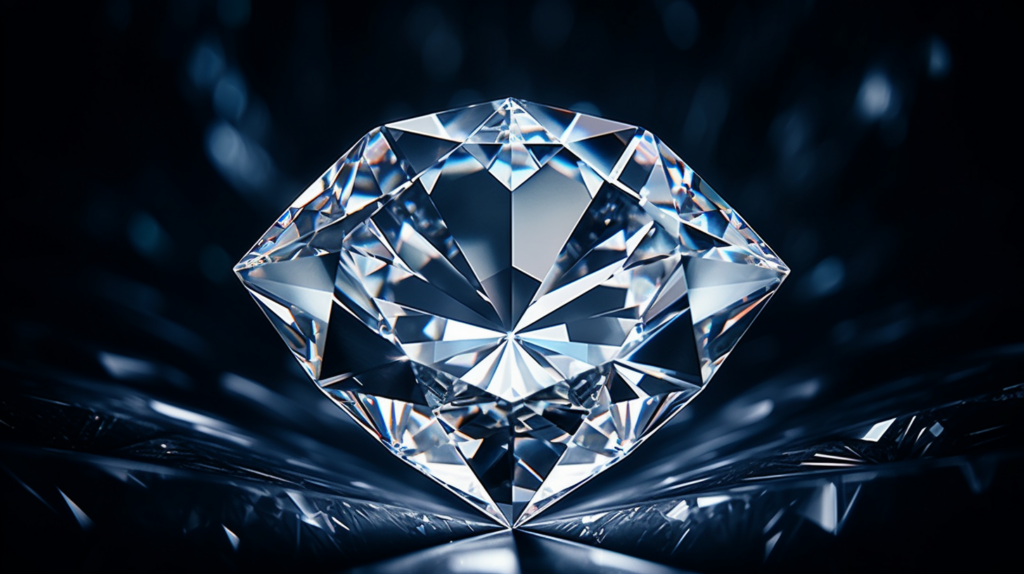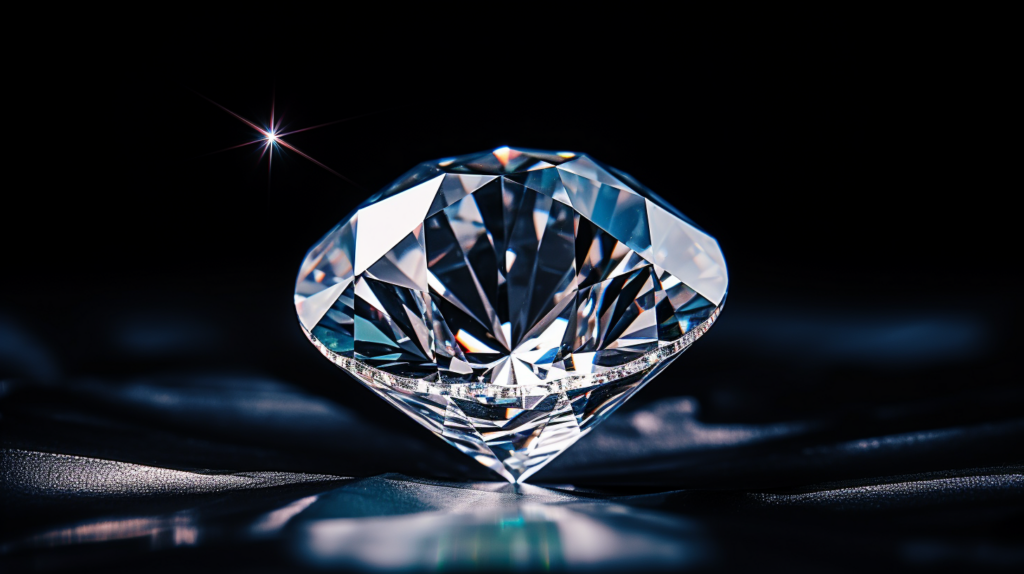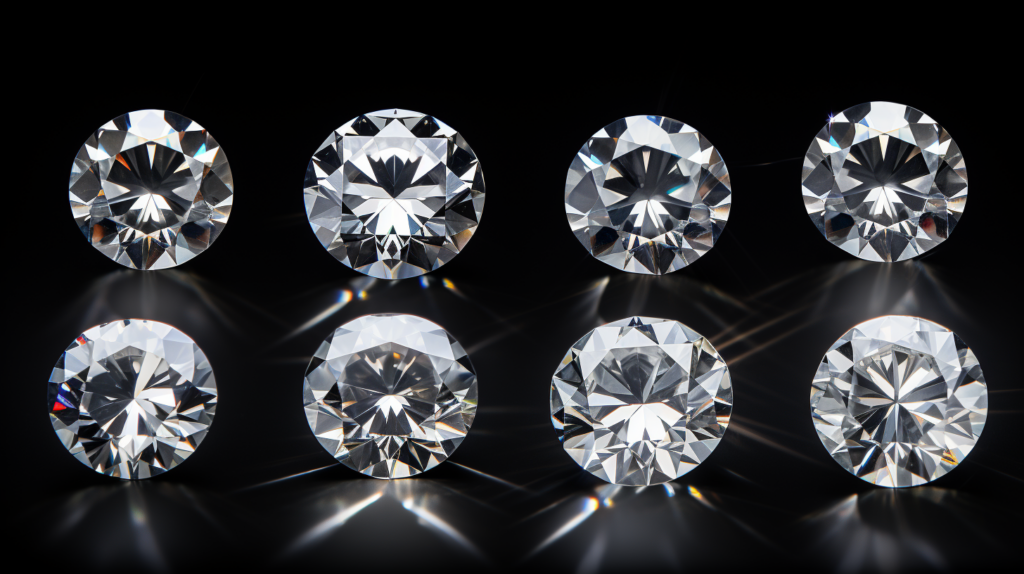Welcome to our diamond culet tour. Today, we’ll examine the culet, a crucial but unknown element of these precious stones. This Brightguide post will educate you on how the culet impacts diamond quality and appearance.
See how it impacts diamonds’ beauty and brilliance to better grasp this intriguing component of these timeless gems. Join us as we see how the diamond culet enhances these stunning stones.
Related article: Understanding Diamond Depth and Table
Key Takeaways
- The culet significantly affects a diamond’s beauty and brilliance, with smaller culets enhancing light reflection.
- For maximum brilliance, opt for a diamond with a small or no culet grade.
- Grading reports assess culet size and shape at 10x magnification, influencing a diamond’s quality and value.
- The culet affects light reflection, symmetry, and overall appearance of a diamond, making it a critical consideration.
- When purchasing a diamond, factors like cut grade, symmetry, and personal preferences should also be taken into account for the best choice.

How Diamond Culets Alter Appearance
For assessing a diamond’s overall beauty, the culet, a component of its appearance, is crucial. Diamonds have a small culet facet at the pavilion base. The pavilion facets meet here. A diamond’s light performance and brilliance depend on many factors. The culet size, also known as “culet size,” affects the diamond’s appearance and value.
The culet size of a GIA-none or AGS-pointed cannot be seen through the table facet. Diamonds with no or a small culet reflect light well and give the pavilion base a point. However, diamonds with larger culets can let light through the bottom, creating dark circles. This may affect the diamond’s appearance and brilliance.
When purchasing a diamond, you should consider the culet size in addition to the cut grade and diamond quality. The culet size affects a diamond’s overall beauty but not its price as much as the Four Cs. Choose one with a small culet or none for optimal light performance and brilliance.
Don’t miss this: Diamond vs. Moissanite: A Battle of Two Stunning Gemstones
Diamond Culet Levels
Before examining the diamond culet, we must understand its grades. The culet grade indicates its size and shape. Diamond culets are small facets at the pavilion base. Gemologists use precise language to describe culet grades from “none” to “extremely large.” A culet with a sharply angled facet is an extra facet.
Since diamond culets are large, light can escape through the bottom and form a dark circle. Diamonds with light leakage look bad and lose brilliance. Diamonds without culets reflect light well and have the most fire and brilliance. The culet grade affects a diamond’s value and appearance.
Next, we’ll discuss the best culet grade for a well-cut diamond.

Which culet grade is best?
For the best appearance and brilliance, choose a diamond with no culet grade. The culet, a small facet at the pavilion base, greatly affects a diamond’s appearance and light reflection. When a diamond has no culet or a small, pointed culet, there is a lot of light reflection in it. This enhances diamond fire and sparkle.
However, diamonds with larger culets may look worse. Diamonds’ bottom visual hole or dark spot may reduce their brilliance. Large culets can detract from a diamond’s overall beauty in modern diamond cutting. When assessing a diamond’s quality, consider its culet grade, cut grade, and symmetry. Choose a diamond with a none or pointed culet grade for maximum brilliance and beauty.
Let’s learn how to determine a diamond’s culet grade next.
Don’t miss this: Exploring Eye Clean Diamonds

How to Determine Diamond Culet Grade
GIA grading reports include culet grades, which determine diamond cut grades. Diamond culet grade and size are checked at 10x magnification. Under a microscope, we can see the culet’s shape, size, and any issues with the facet surfaces or pavilion facets! We can accurately grade the culet and give customers useful information thanks to this in-depth analysis.
We monitor culet size, shape, and alignment during the test. The diamond’s appearance and light performance grade are also considered. An optical symmetry analysis and facet length measurement can estimate the culet grade.
Know a diamond’s culet grade to assess its quality and value. A high-quality culet enhances the diamond’s brilliance and overall beauty. When buying a diamond, consider more than culet grade. Also important are cut grade and symmetry.
An interesting read: Exploring Lab Created Diamond Color
How to Verify Diamond Culet
Some diamond merchants list this grade online and on GIA certificates:
- Blue Nile: The “Diamond Details” section of any loose diamond page lists the culet grade of a Blue Nile diamond. The GIA certificate shows the grade.
- James Allen: This vendor doesn’t list diamond culet grades on their website. However, you can request the GIA document for every GIA-certified diamond, which includes the culet grade and more.
- Leibish & Co.: Most diamonds sold by Leibish & Co. have GIA culet grades. Their specialty is fancy-colored diamonds.

Diamond Culet Functions
Experience has shown that a beautiful diamond’s culet can greatly impact its appearance and brilliance. These key points explain what a diamond culet does:
- Diamonds with a small, barely visible culet or no culet are thought to be better cut.
- Carefully cut and arranged diamond facets create a full light reflection and refraction pattern. Culets can disrupt this pattern by letting light through the diamond’s bottom.
- The culet size and shape affect the diamond’s balance and symmetry. A large or misaligned culet can ruin the diamond’s beauty.
- The pavilion angles, depth, and difference in facet length of the diamond can also alter the culet’s appearance. The size and slope of the pavilion facets relative to the culet can reflect a lot of light.
- A diamond’s overall appearance may change depending on the difference in size between its culet and average diameter. A large culet can cause a dark spot or window effect across the diamond.
- For instance, a round brilliant-cut diamond can have 57 or 58 facets and a domed or faceted culet.
The next section will explain how to choose the best diamond culet for your needs and budget.
Learn more: Cuts in a Diamond: A Comprehensive Guide
Conclusion
We can say with confidence that the best diamond for brilliance and overall appearance is one with a culet grade of none or pointed, now that we’ve examined every part of the diamond culet. Diamonds without or with pointed culets have the most fire and brilliance. Because they reflect light well, the pavilion appears to have a base point.
Big culets in a diamond let light escape through the bottom and appear as dark circles, making it less appealing. Secure settings and avoiding hard surfaces are best for pointed culets, which are more likely to chip. We also learned that you should also consider cut grade, symmetry, and personal taste. Customers who buy from reputable stores like James Allen and Blue Nile that list the culet grade of their diamonds can expect careful mounting and good advice.
Sources
BrighterGuide is dedicated to providing accurate and relevant information as you explore the wonderful world of diamonds and jewelry. To this end, our writers refer to primary information sources in building each article that appears on this website. These include, but are not limited to, published news articles, government portals, research papers, and more.
- Learn How to Buy a Diamond with the GIA Diamond Buying Guide | 4Cs of Diamond Quality by GIA. (2022, July 22). GIA 4Cs. https://4cs.gia.edu/en-us/diamond-buying-guide/
- The GIA difference – GIA.edu. (n.d.). https://www.gia.edu/gia-about
- Gemological Institute of America. (n.d.). Gemological Institute Of America | All About Gemstones – GIA. https://www.gia.edu/